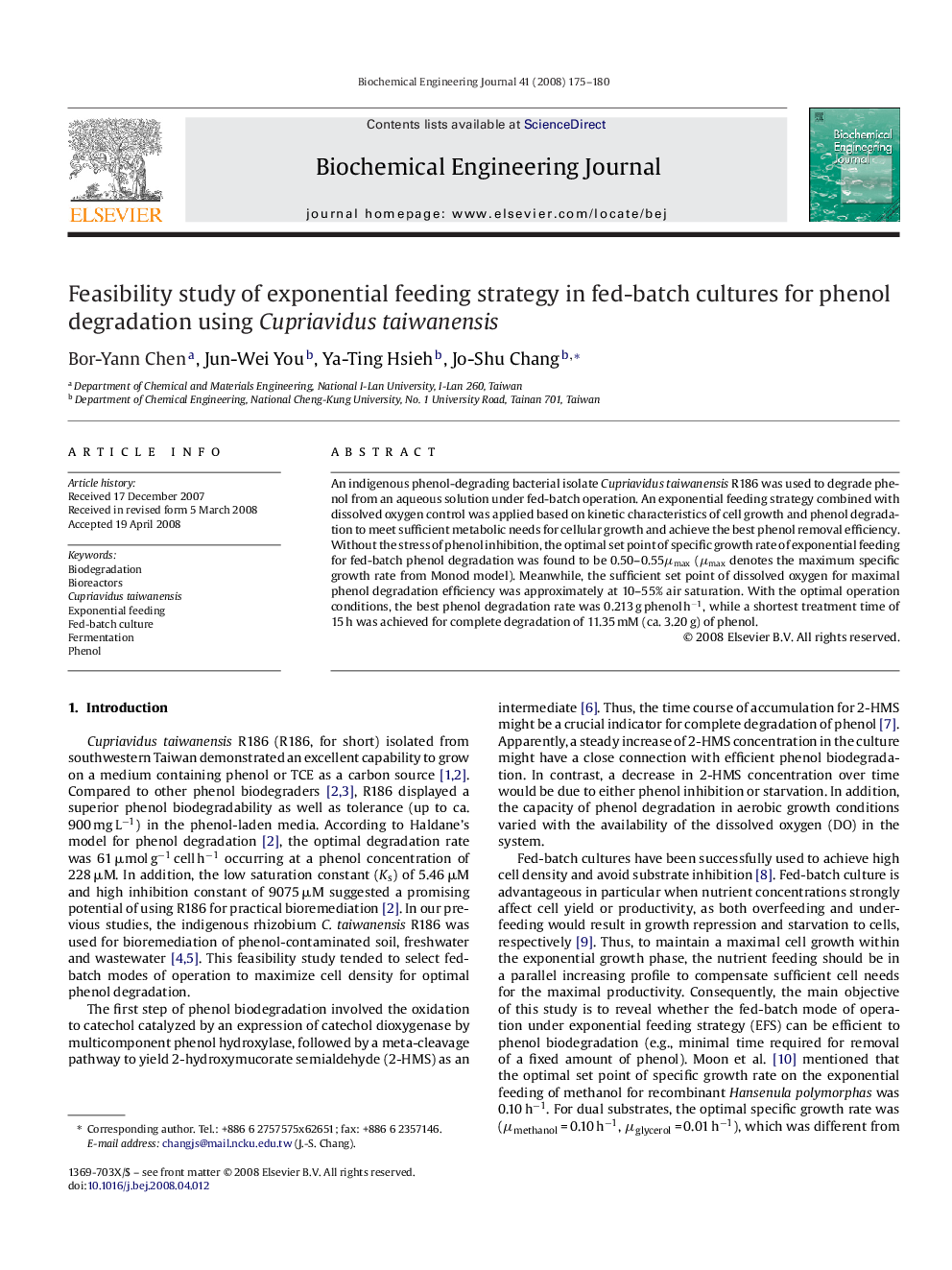| Article ID | Journal | Published Year | Pages | File Type |
|---|---|---|---|---|
| 4373 | Biochemical Engineering Journal | 2008 | 6 Pages |
An indigenous phenol-degrading bacterial isolate Cupriavidus taiwanensis R186 was used to degrade phenol from an aqueous solution under fed-batch operation. An exponential feeding strategy combined with dissolved oxygen control was applied based on kinetic characteristics of cell growth and phenol degradation to meet sufficient metabolic needs for cellular growth and achieve the best phenol removal efficiency. Without the stress of phenol inhibition, the optimal set point of specific growth rate of exponential feeding for fed-batch phenol degradation was found to be 0.50–0.55μmax (μmax denotes the maximum specific growth rate from Monod model). Meanwhile, the sufficient set point of dissolved oxygen for maximal phenol degradation efficiency was approximately at 10–55% air saturation. With the optimal operation conditions, the best phenol degradation rate was 0.213 g phenol h−1, while a shortest treatment time of 15 h was achieved for complete degradation of 11.35 mM (ca. 3.20 g) of phenol.
